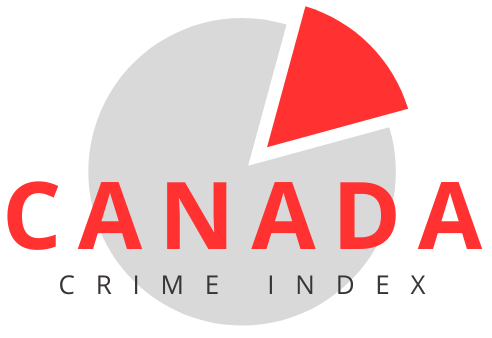With tuition, rent, and food prices rising steadily across Canadian provinces, university and college students are turning to microtask platforms as a supplemental income source.
Platforms like Amazon Mechanical Turk, Clickworker, Appen, and Microworkers offer short, low-barrier digital tasks—from transcribing short audio clips to moderating content—that can be completed between lectures or during commutes.
In provinces like Ontario and British Columbia, where average monthly student expenses often exceed CAD 1,500, this form of gig work is increasingly helping students cover essentials such as groceries, phone bills, or transportation.
According to a 2024 survey by the Canadian Undergraduate Survey Consortium, roughly 22% of full-time students engage in online microjobs or platform-based gigs to manage financial stress, up from just 9% in 2019.
Financial Reality for Canadian Students
Living costs for students in Canada vary by province and city, but across the board, they are rising. Below is a snapshot of average monthly expenses for a single student living independently in a mid-sized city like Ottawa or Halifax:

Given that part-time jobs often pay between $15 and $18 per hour and are limited to 20 hours/week for international students, it’s easy to see why many need alternative sources of income.
What Are Microtask Platforms?
Microtask platforms divide large projects into very small tasks that can be completed by many workers simultaneously. Unlike freelance work, microtasks typically don’t require specialized skills, which makes them accessible to students from all academic backgrounds.
Examples of Microtask Platforms Used in Canada
Platform
Common Task Types
AvAvg.Pay per Task
Accessibility
Amazon Mechanical Turk (MTurk)
Surveys, data entry, categorization
$0.01–$2/task
Global
Clickworker
Text creation, copy editing, and product categorization
$0.02–$3/task
Global
Appen
Voice recordings, search evaluation
$0.05–$5/task
High
Remotasks
Image annotation, labeling, and transcription
$0.10–$4/task
Moderate
UHRS (via vendors like OneForma)
Web search relevance, keyword tagging
$0.05–$2/task
Varies
How Much Can Students Realistically Earn?
Microtask income varies dramatically depending on platform, task complexity, and time invested. However, most students earn modest amounts. Based on user data from Reddit, forums, and worker communities:
While these amounts rarely cover all living costs, they can reduce pressure by helping students pay for groceries, phone bills, or a portion of rent.
Why Students Choose Microtasking

Students in Canada are drawn to microtask platforms for one central reason: flexibility. These platforms allow users to work at any time of day or night, from any location with an internet connection.
This is especially important for those balancing irregular university schedules, exam seasons, and part-time classes. Unlike traditional jobs that require fixed shifts, microtasks can be completed in short bursts, between lectures or late at night, making them highly adaptable to a student’s lifestyle.
Another appealing aspect is the lack of bureaucratic hurdles. For many international students, traditional employment is restricted by visa regulations or limited to a set number of hours per week.
Some microtask platforms operate in regulatory grey zones that don’t classify contributors as formal employees. This allows students to earn money without needing work permits, contracts, or additional documentation.
Microtasking also requires minimal qualifications. Most tasks involve simple activities like categorizing images, transcribing audio clips, or answering surveys.
There’s no need for resumes, interviews, or previous experience, which makes entry easy for students from diverse academic or linguistic backgrounds.
From a technical standpoint, the barrier to entry is also low. Students need only a basic laptop and stable internet—tools they already use for schoolwork. There’s no need for expensive software, specialized hardware, or training courses.
Finally, many students register on multiple platforms simultaneously to boost their chances of finding consistent work. By spreading their activity across sites like Clickworker, Appen, or Remotasks, they can increase their task pool and earnings potential without depending on a single source.
Limitations and Trade-offs

Despite its conveniences, microtasking has serious limitations. Pay is one of the biggest drawbacks. While tasks are easy to access, they usually pay very little, often just a few cents each.
Effective hourly rates for most students hover between $2 and $5, far below minimum wage. It takes hours of focused effort to earn even modest sums.
Another concern is the complete lack of labor protections. Because students aren’t considered employees, they receive no benefits, no sick leave, and no legal recourse if their work is unfairly rejected or their account is suspended. Payouts can be delayed, and customer support is often unreliable or non-existent.
In contrast, other online services—including entertainment and lifestyle platforms that also rely on micro-contributions for content labeling, UI testing, or market analysis—have more open international access. For example, sites like casinos.com sometimes run crowdsourced usability feedback tasks for student freelancers, separate from their core offerings.
These are not advertised broadly and are typically routed through third-party work hubs or promotional research channels. For students with experience in UX feedback, such niche assignments can offer slightly better pay and more structured task environments, especially during peak testing cycles when companies refresh their interfaces or expand into new markets.
The work itself can be tedious and repetitive. Labeling the same kinds of images or transcribing low-quality audio for hours can lead to mental fatigue. There’s little variety or creativity involved, and no opportunity for professional growth or skill development.
Finally, not all platforms are fully open to Canadian users. For example, Amazon Mechanical Turk does not officially support workers from Canada, which forces users to employ VPNs or partner accounts—practices that may violate the terms of service and lead to account bans.
These platform limitations mean students often need to jump through additional hoops just to gain access.
Conclusion

For students in Canada juggling tuition fees, housing costs, and food inflation, microtask platforms offer a practical, short-term lifeline. With minimal entry barriers, flexible hours, and no need for work permits, they serve a clear purpose: helping students close financial gaps when formal part-time jobs are unavailable or insufficient.
A student spending just 10 hours a week on platforms like Clickworker or Appen can realistically earn $100–$250 monthly, enough to cover phone bills, grocery staples, or public transit passes in cities like Toronto or Montreal.
However, microtasking is not a substitute for stable employment or a long-term income strategy. Pay remains well below Canadian minimum wage, and there’s no safety net in place.
Tasks offer little in terms of skill development or career advancement, and users are subject to sudden account suspensions or payment delays. For international students, especially, relying solely on microtask income can leave them financially vulnerable.












